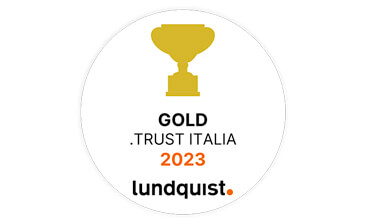
Acea for World Energy Saving Day
To better understand what is meant by ecological transition, it is possible to refer to the Ecological Transition Plan (PTE), the document prepared at the national level by the competent Ministry, consistent with the European Green Deal, which directs Italy toward sustainable development and ecological management. The ecological transition, according to the PTE, is achieved through multiple directions: decarbonization, with increased energy production from renewable sources, sustainable mobility, improvement of air quality, protection and strengthening of biodiversity, protection of the sea, combating land consumption and hydrogeological disruption, including the strengthening of water supply infrastructure, sewers and purifiers and the reduction of water losses, and strengthening the circular economy, maximizing the recovery and reuse of waste.
This implies a transformation of the social, economic and productive system accompanied by the push of technological innovation and a multiplicity of actions in different areas: economy, industry, raw materials, water, waste, energy and many others. At the heart of the ecological transition is, in fact, the concept of "interdependence" between natural, economic and social phenomena, which is fundamental to succeed in embarking on a path of sustainable development.
The keywords to define the ecological transition are therefore multidisciplinarity, complexity, sustainability, inclusiveness, decarbonization, circular economy, resilience, protection of the natural environment. The means are renewable energy, energy efficiency and upgrading, technological innovation, digitization, green finance, sustainable supply chains and a strongly enabling framework of new rules to achieve the so-called "net zero" goal by 2050, that is, net zero CO2 emissions by mid-century.
The drive toward ecological transition has become increasingly strong in recent decades. Climate change has increased awareness of a paradigm shift toward more sustainable production and consumption patterns. Thus, with the onset of the ecological transition, there has been a growing awareness of the need to shift from a linear to a circular economic model.
The term decarbonization implies the gradual reduction in the use of carbon-containing sources of energy production (such as coal, oil, gas), with high emissions, including carbon dioxide (CO2). This requires increasing consumption efficiency on the energy demand side and replacing fossil fuels with renewable alternatives on the supply side.
At the same time, less raw materials need to be used. Organic materials must be able to be returned to the biosphere, and man-made materials must be designed to be reused with minimal loss of quality. Wastewater treatment, composting of food residues, and biogas generation from anaerobic digestion of sludge and organic waste are all examples of circular economy.
Thus, we speak of "transition" since the transition to a new development model involves a transformation phase. Consistent with the principle of interdependence, a multidisciplinary method must be adopted to deal with sustainable development in a complex scenario.
This virtuous and circular model is applied in different areas of action that find expression in the Sustainable Development Goals of the United Nations 2030 Agenda and those of the Paris Agreement. These goals have been incorporated in the European context in the European Green Deal and declined by individual countries through the initiatives of the Integrated National Energy and Climate Plans (PNIEC) and the National Recovery and Resilience Plans (PNRR).
Italy is also following the National Ecological Transition Plan, integrated right with the PNRR, which presents the European and national legislative framework in which the macro-objectives to be pursued for the next 30 years are located, as well as the economic and political levers to make them feasible.
The Plan (PTE) has identified specific objectives that can be summarized in five categories of intervention:
The ecological transition thus has impacts on different areas, many of them managed by multi-utilities such as Acea. Acea's lines of action can in fact be traced back to the points of the Plan (PTE).
The Group, whose main production plants are hydroelectric, has increased the production of energy from renewable sources (solar photovoltaic) and applies circular solutions for the production of electricity from biogas (SDG 7 of Agenda 2030); for years, it has also been developing the circular economy chain in waste management (waste-to-energy, material recovery, composting, etc.). The Group is particularly attentive to the sustainable management of water resources, promoting interventions to reduce leakage and increase the resilience of infrastructure (SDG 6 of Agenda 2030). The commitment to the protection of the ecosystems on which the infrastructures (networks and plants) insist is constant and concerns, for example, the Plan for the decommissioning of HV pylons and the safeguarding of water sources.
Operating pragmatically in the territory, through a set of citizen services, Acea also aims to facilitate the transformation of cities into smart cities and the formation of energy communities, with charging infrastructure for sustainable electric mobility, smart and digitized distribution networks and infrastructure.
As part of an increasing commitment to achieving sustainability goals, Acea also issued green bonds intended to finance initiatives for water resource protection, renewable energy deployment, circular economy, power grid upgrades, and energy efficiency.
Green bonds are bonds like any other, with the characteristic of being intended to finance climate and environmental projects. They are, in general, regulated according to the principles of the International Capital Market Association (ICMA), which has developed guidelines called "Green Bond Principles." These principles establish criteria and procedures to ensure that Green Bond proceeds are used transparently and responsibly to finance sustainable projects. According to the Climate Bond Initiative, more than $218 billion of green bonds have been issued globally in the first six months of 2022, and more than $1.880 billion since 2015.
The issuance of green bonds has enabled Acea to raise the funds for massive investments needed to achieve the ecological transition and greater circularity in its economic activities.
Implementing these principles of reduction, reuse, and recycling into the decarbonization and environmental sustainability strategies of companies and governments will help rebalance the relationship between societal development and the ecosystem.
Discover the latest news and initiatives of the Acea Group

Acea for World Energy Saving Day

Visit the virtual museum about the history of the Acea Group

The channel for the commercial requests on land urbanisation

Acea turns the spotlight on the Rome Film Festival 2023

Acea is in the "Gold class" in the .trust research

Read more about our culture of inclusiveness